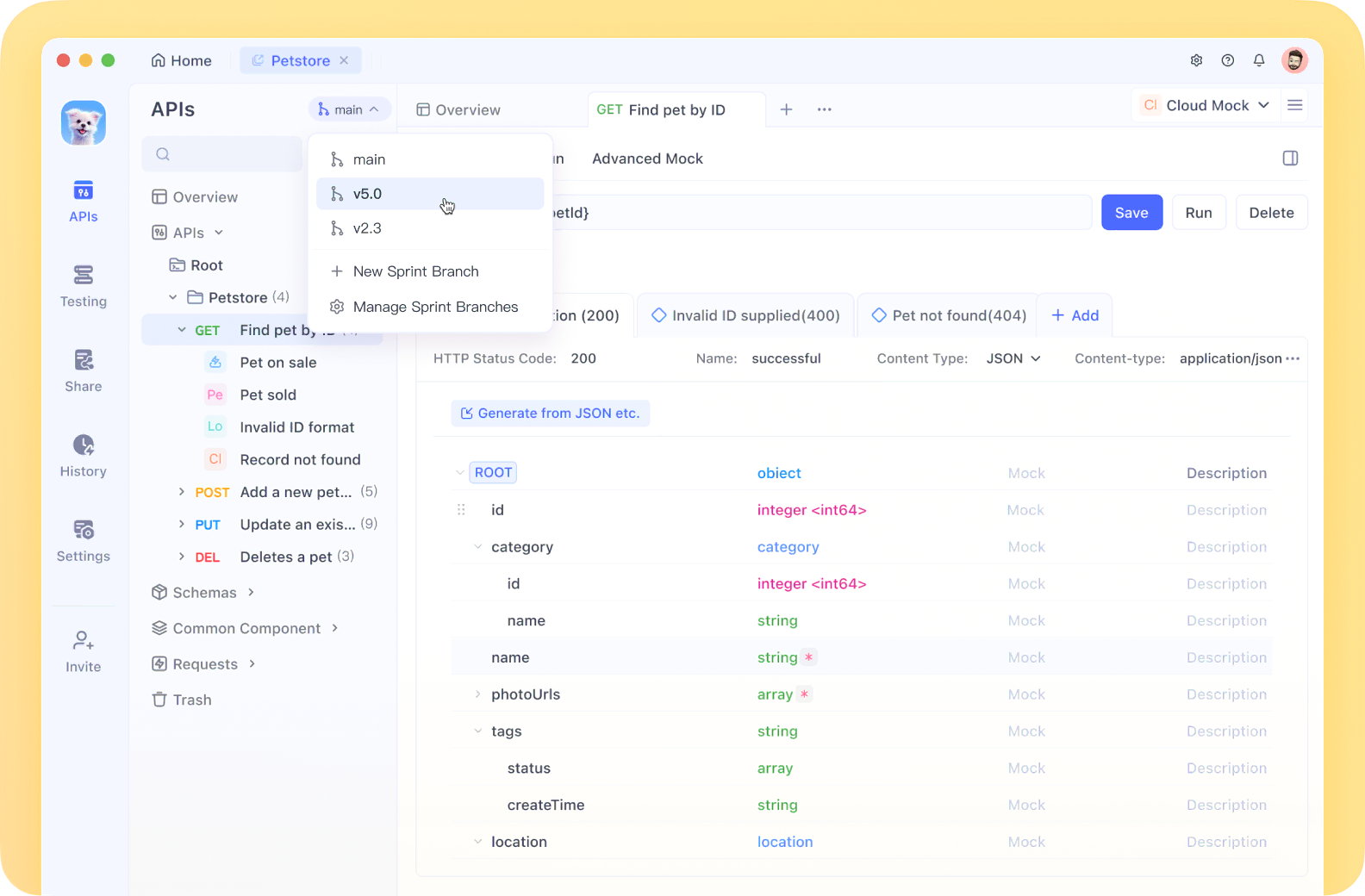
Selenium WebDriverについて考えると、通常はブラウザの自動化やUIテストと関連付けられます。しかし、Seleniumは正しく使用すればAPIテストの強力なツールにもなります。このチュートリアルでは、Selenium WebDriverの機能を活用してAPIテストを実行するプロセスをガイドし、実用的な例とベストプラクティスを提供します。
API(アプリケーションプログラミングインターフェース)テストは、アプリケーションのAPIを直接テストし、その機能、信頼性、パフォーマンス、安全性を検証することを含みます。Postman、REST Assured、SoapUIなどの専用ツールがある一方で、Selenium WebDriverは、特にUIとAPIテストを同じフレームワーク内で統合したい場合に、APIテストツールキットに貴重な追加物となります。
前提条件
Selenium WebDriverを使用してAPIテストに飛び込む前に、次のことを確認してください:
- Selenium WebDriverの基本的な知識
- お好きなプログラミング言語(Java、Python、C#、JavaScript)
- 開発環境に設定されたSelenium WebDriver
- REST/SOAP APIの理解
- HTTPメソッド(GET、POST、PUT、DELETE)の基本的な知識
アーキテクチャの理解
Selenium WebDriverのアーキテクチャは次の能力により、APIテストに適しています:
- 組み込みまたは外部ライブラリを使用してHTTPリクエストを直接送信する
- レスポンスを処理し、データを検証する
- 既存のテストフレームワークと統合する
- テストデータと環境を管理する
環境の設定
Selenium WebDriverを使用してAPIテスト用の基本的な環境を設定しましょう:
Javaの例
import org.openqa.selenium.WebDriver;
import org.openqa.selenium.chrome.ChromeDriver;
import org.openqa.selenium.chrome.ChromeOptions;
import java.io.BufferedReader;
import java.io.IOException;
import java.io.InputStreamReader;
import java.net.HttpURLConnection;
import java.net.URL;
public class SeleniumApiTesting {
private WebDriver driver;
public void setUp() {
System.setProperty("webdriver.chrome.driver", "path/to/chromedriver");
ChromeOptions options = new ChromeOptions();
options.addArguments("--headless"); // APIテスト用のヘッドレスモード
driver = new ChromeDriver(options);
}
public void tearDown() {
if (driver != null) {
driver.quit();
}
}
}
Pythonの例
from selenium import webdriver
from selenium.webdriver.chrome.options import Options
import requests
import json
def setup_driver():
chrome_options = Options()
chrome_options.add_argument("--headless") # APIテスト用のヘッドレスモード
driver = webdriver.Chrome(options=chrome_options)
return driver
def teardown_driver(driver):
if driver is not None:
driver.quit()
Selenium WebDriverによるAPIテストのアプローチ
1. ネイティブHTTPライブラリの使用
最も単純なアプローチは、自身のプログラミング言語のネイティブHTTPライブラリをSelenium WebDriverと併用することです。
Javaの例 - GETリクエスト
public String performGetRequest(String endpoint) throws IOException {
URL url = new URL(endpoint);
HttpURLConnection connection = (HttpURLConnection) url.openConnection();
connection.setRequestMethod("GET");
int responseCode = connection.getResponseCode();
System.out.println("GETレスポンスコード: " + responseCode);
if (responseCode == HttpURLConnection.HTTP_OK) {
BufferedReader in = new BufferedReader(new InputStreamReader(connection.getInputStream()));
String inputLine;
StringBuilder response = new StringBuilder();
while ((inputLine = in.readLine()) != null) {
response.append(inputLine);
}
in.close();
return response.toString();
} else {
return "GETリクエストはレスポンスコード: " + responseCode + "で失敗しました";
}
}
Pythonの例 - POSTリクエスト
def perform_post_request(endpoint, payload):
headers = {'Content-Type': 'application/json'}
response = requests.post(endpoint, data=json.dumps(payload), headers=headers)
print(f"POSTレスポンスコード: {response.status_code}")
if response.status_code == 200:
return response.json()
else:
return f"POSTリクエストはレスポンスコード: {response.status_code}で失敗しました"
2. JavaScriptExecutorを使用してAJAXコールを行う
別のアプローチは、SeleniumのJavaScriptExecutorを使用してブラウザから直接AJAXコールを行うことです。
Javaの例
import org.openqa.selenium.JavascriptExecutor;
public String performApiCallWithJsExecutor(String endpoint, String method, String payload) {
String script = String.format(
"var xhr = new XMLHttpRequest();" +
"xhr.open('%s', '%s', false);" +
"xhr.setRequestHeader('Content-Type', 'application/json');" +
"xhr.send('%s');" +
"return xhr.responseText;",
method, endpoint, payload
);
return (String) ((JavascriptExecutor) driver).executeScript(script);
}
Pythonの例
def perform_api_call_with_js_executor(driver, endpoint, method, payload):
script = f"""
var xhr = new XMLHttpRequest();
xhr.open('{method}', '{endpoint}', false);
xhr.setRequestHeader('Content-Type', 'application/json');
xhr.send('{payload}');
return xhr.responseText;
"""
return driver.execute_script(script)
3. APIコールの傍受と変更
Selenium WebDriverは、アプリケーションによって行われるAPIコールを傍受して変更するために使用できます。特に、BrowserMob Proxyのようなプロキシツールと組み合わせて使用する場合、効果的です。
BrowserMob Proxyを使用したJavaの例
import net.lightbody.bmp.BrowserMobProxy;
import net.lightbody.bmp.BrowserMobProxyServer;
import net.lightbody.bmp.client.ClientUtil;
import org.openqa.selenium.Proxy;
public void setupProxyForApiInterception() {
// プロキシを起動
BrowserMobProxy proxy = new BrowserMobProxyServer();
proxy.start(0);
// Seleniumプロキシオブジェクトを取得
Proxy seleniumProxy = ClientUtil.createSeleniumProxy(proxy);
// Chromeをプロキシを使用するように設定
ChromeOptions options = new ChromeOptions();
options.setCapability("proxy", seleniumProxy);
// WebDriverインスタンスを作成
driver = new ChromeDriver(options);
// APIコールを傍受するためのリクエストフィルターを追加
proxy.addRequestFilter((request, contents, messageInfo) -> {
if (request.getUri().contains("/api/")) {
System.out.println("傍受したAPIコール: " + request.getUri());
// 必要に応じてヘッダー、パラメーター、またはリクエストボディを変更
}
return null;
});
// APIレスポンスを検査し、変更するためのレスポンスフィルターを追加
proxy.addResponseFilter((response, contents, messageInfo) -> {
if (messageInfo.getOriginalRequest().getUri().contains("/api/")) {
String responseBody = contents.getTextContents();
System.out.println("APIレスポンス: " + responseBody);
// 必要に応じてレスポンスを変更
}
});
}
完全なAPIテストフレームワークを構築する
Selenium WebDriverを使用して、より構造化されたAPIテストフレームワークを作成しましょう:
Javaの例
import org.json.JSONObject;
import org.testng.Assert;
import org.testng.annotations.AfterClass;
import org.testng.annotations.BeforeClass;
import org.testng.annotations.Test;
import java.io.IOException;
public class ApiTestFramework {
private WebDriver driver;
private final String BASE_URL = "<https://api.example.com>";
@BeforeClass
public void setUp() {
System.setProperty("webdriver.chrome.driver", "path/to/chromedriver");
ChromeOptions options = new ChromeOptions();
options.addArguments("--headless");
driver = new ChromeDriver(options);
}
@Test
public void testGetUserEndpoint() throws IOException {
String endpoint = BASE_URL + "/api/users/1";
String response = performGetRequest(endpoint);
JSONObject jsonResponse = new JSONObject(response);
Assert.assertEquals(jsonResponse.getString("name"), "John Doe");
Assert.assertEquals(jsonResponse.getInt("id"), 1);
Assert.assertTrue(jsonResponse.has("email"));
}
@Test
public void testCreateUserEndpoint() throws IOException {
String endpoint = BASE_URL + "/api/users";
JSONObject payload = new JSONObject();
payload.put("name", "Jane Smith");
payload.put("email", "jane.smith@example.com");
String response = performPostRequest(endpoint, payload.toString());
JSONObject jsonResponse = new JSONObject(response);
Assert.assertTrue(jsonResponse.has("id"));
Assert.assertEquals(jsonResponse.getString("name"), "Jane Smith");
}
private String performGetRequest(String endpoint) throws IOException {
// 前の例からの実装
}
private String performPostRequest(String endpoint, String payload) throws IOException {
URL url = new URL(endpoint);
HttpURLConnection connection = (HttpURLConnection) url.openConnection();
connection.setRequestMethod("POST");
connection.setRequestProperty("Content-Type", "application/json");
connection.setDoOutput(true);
// ペイロードを接続に書き込む
try (java.io.OutputStream os = connection.getOutputStream()) {
byte[] input = payload.getBytes("utf-8");
os.write(input, 0, input.length);
}
int responseCode = connection.getResponseCode();
System.out.println("POSTレスポンスコード: " + responseCode);
try (BufferedReader br = new BufferedReader(
new InputStreamReader(connection.getInputStream(), "utf-8"))) {
StringBuilder response = new StringBuilder();
String responseLine;
while ((responseLine = br.readLine()) != null) {
response.append(responseLine.trim());
}
return response.toString();
}
}
@AfterClass
public void tearDown() {
if (driver != null) {
driver.quit();
}
}
}
Pythonの例
import unittest
import json
from selenium import webdriver
from selenium.webdriver.chrome.options import Options
import requests
class ApiTestFramework(unittest.TestCase):
BASE_URL = "<https://api.example.com>"
def setUp(self):
chrome_options = Options()
chrome_options.add_argument("--headless")
self.driver = webdriver.Chrome(options=chrome_options)
def test_get_user_endpoint(self):
endpoint = self.BASE_URL + "/api/users/1"
response = self.perform_get_request(endpoint)
self.assertEqual(response['name'], "John Doe")
self.assertEqual(response['id'], 1)
self.assertIn('email', response)
def test_create_user_endpoint(self):
endpoint = self.BASE_URL + "/api/users"
payload = {
"name": "Jane Smith",
"email": "jane.smith@example.com"
}
response = self.perform_post_request(endpoint, payload)
self.assertIn('id', response)
self.assertEqual(response['name'], "Jane Smith")
def perform_get_request(self, endpoint):
response = requests.get(endpoint)
return response.json() if response.status_code == 200 else None
def perform_post_request(self, endpoint, payload):
headers = {'Content-Type': 'application/json'}
response = requests.post(endpoint, data=json.dumps(payload), headers=headers)
return response.json() if response.status_code in [200, 201] else None
def tearDown(self):
if self.driver:
self.driver.quit()
if __name__ == '__main__':
unittest.main()
UIとAPIテストの統合
Selenium WebDriverを使用してAPIテストを行う最大の利点の一つは、同じフレームワークでUIテストとAPIテストを統合できることです:
@Test
public void testLoginAndVerifyUserDataAPI() throws IOException {
// UI部分: UIを通じてログイン
driver.get("<https://example.com/login>");
driver.findElement(By.id("username")).sendKeys("testuser");
driver.findElement(By.id("password")).sendKeys("password");
driver.findElement(By.id("loginButton")).click();
// ログインの完了を待つ
WebDriverWait wait = new WebDriverWait(driver, Duration.ofSeconds(10));
wait.until(ExpectedConditions.urlContains("/dashboard"));
// クッキーまたはローカルストレージから認証トークンを抽出
String authToken = (String) ((JavascriptExecutor) driver)
.executeScript("return localStorage.getItem('authToken');");
// API部分: トークンを使用して認証されたAPIコールを行う
String endpoint = BASE_URL + "/api/user/profile";
URL url = new URL(endpoint);
HttpURLConnection connection = (HttpURLConnection) url.openConnection();
connection.setRequestMethod("GET");
connection.setRequestProperty("Authorization", "Bearer " + authToken);
// APIレスポンスを処理および検証
int responseCode = connection.getResponseCode();
Assert.assertEquals(responseCode, 200);
// レスポンスを読み取り、解析
BufferedReader in = new BufferedReader(new InputStreamReader(connection.getInputStream()));
String response = in.lines().collect(Collectors.joining());
in.close();
JSONObject jsonResponse = new JSONObject(response);
// APIデータがUIに表示される内容と一致することを確認
String uiUsername = driver.findElement(By.id("profileUsername")).getText();
Assert.assertEquals(jsonResponse.getString("username"), uiUsername);
}
Selenium WebDriverによるAPIテストのベストプラクティス
- ヘッドレスモードを使用する: 純粋なAPIテストを行う場合、リソースを節約するためにSeleniumをヘッドレスモードで実行します。
- APIテストとUIテストを分ける: 統合できる一方で、APIテストとUIテストは論理的に分けておくことが重要です。
- アサーションライブラリを活用する: APIレスポンスを検証するために包括的なアサーションライブラリを使用します。
- エラーハンドリングを実装する: APIの失敗に対する適切なエラーハンドリングを追加します。
- APIリクエストとレスポンスをログに記録する: デバッグの目的で、すべてのAPIインタラクションをログに記録します。
- テストをパラメータ化する: データプロバイダやパラメータ化されたテストを使用して様々なシナリオをテストします。
- 認証処理を実装する: 認証を処理するための再利用可能なメソッドを作成します。
- パフォーマンスを考慮する: Seleniumは専用のAPIテストツールと比較してオーバーヘッドが発生する可能性があることを意識します。
Selenium WebDriverによるAPIテストの制限
- パフォーマンスオーバーヘッド: Seleniumは主にブラウザの自動化用に設計されているため、純粋なAPIテストの場合オーバーヘッドが発生します。
- 限定的なAPI特有の機能: 専用のAPIテストツールはAPIテストに特化した機能を提供します。
- ブラウザ依存: ヘッドレスモードでも、Seleniumはブラウザを必要としますが、APIテストには不要な場合もあります。
- 複雑さ: APIテスト用にSeleniumを設定するのは、専用のAPIテストツールを使用するよりも複雑である可能性があります。
APIテストにSelenium WebDriverを使用するタイミング
Selenium WebDriverは、以下のシナリオでAPIテストに最も適しています:
- すでにSeleniumベースのUIテストフレームワークを持っていて、これを拡張したい場合。
- UIとAPIの相互作用が含まれるシナリオをテストする必要がある場合。
- ブラウザのコンテキストでAPIをテストする必要がある場合(JavaScript APIコールのテストなど)。
- アプリケーションによって行われるAPIコールを傍受して変更したい場合。
結論
Selenium WebDriverはAPIテストのための多目的なツールとなり得ます。特に既存のUIテストフレームワークと統合することで、その能力を発揮します。複雑なAPIテストニーズのために専用のAPIテストツールを置き換えることはできませんが、UIテストとAPIテストをシングルフレームワークで組み合わせるフレキシブルな方法を提供します。
このチュートリアルで提供されたアプローチと例を活用すれば、Selenium WebDriverを効果的にAPIテストの要件に利用できます。トレードオフを考慮し、自分の特定のテストニーズに最適なツールを選ぶことを忘れないでください。
REST API、SOAPサービス、またはGraphQLエンドポイントをテストする際には、Selenium WebDriverを利用して、アプリケーションのUIとその根底にあるAPI機能の両方を検証する包括的なテストを作成できます。
より高度なAPIテストニーズを持つ場合、Selenium WebDriverをREST Assured(Java用)やRequests(Python用)などの専用のAPIテストライブラリやフレームワークと組み合わせて、両方の利点を得ることを検討してください。
テストを楽しんでください!
